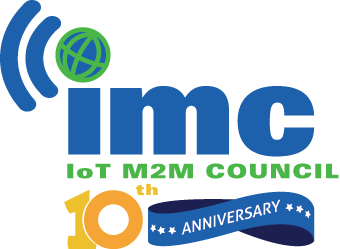Ford and Vodafone test connected traffic lights
- April 11, 2022
- Steve Rogerson

Ford and Vodafone have trialled connected traffic light technology in Germany that could automatically go green to offer clearer routes for ambulances, fire engines and police vehicles.
They could also help reduce the risk of an accident caused by first responders driving through red lights.
“Whether it’s a fire engine attending a blaze or an ambulance that is en route to an accident, the last thing anyone wants is for these drivers to be caught up among other vehicles waiting for the lights to change,” said Martin Sommer, research engineer at Ford of Europe.
Congestion, as well, could be reduced with traffic lights sending the red-green timing information to approaching vehicles.
The trial was part of a broader project that involved testing automated and connected vehicles and networked infrastructure in highway, urban and rural areas.
To test the technology, Ford used a road with eight consecutive traffic lights in Aachen, Germany, and two stretches with three consecutive traffic lights just outside the city, all set up by the project’s partners.
The Ford Kuga plug-in hybrid test vehicle, equipped with on-board units for communicating with the infrastructure and rapid control prototyping hardware for running the prototype software in the vehicle, acted as an ambulance and passenger vehicle for the different test scenarios.
For testing an emergency response situation, the test vehicle signalled to the traffic lights to turn the light green. Once the vehicle passed through the junction, the traffic lights returned to standard operation.
For testing daily driving situations, the test vehicle received the timing information for when the traffic lights turned from red to green and green to red. Ford’s adaptive cruise control technology then adapted the vehicle’s speed to help ensure a higher proportion of traffic encountered a green light.
When the traffic light was red, the vehicle’s speed was reduced well ahead of the junction to time the vehicle’s approach to arrive at the light the moment it turned green, for example from 50 to 30km/hr.
For vehicles encountering a red light, the technology could still help reduce harsh braking and the time spent at a standstill. The vehicle received the traffic light information well ahead of the junction and slowed down earlier, helping reduce congestion.
The communication between vehicles and traffic lights is enabled by C-V2X (cellular vehicle-to-everything) technology, a unified platform that connects vehicles to roadside infrastructure, other vehicles and other road users.
“Exchanging data between cars, emergency vehicles and traffic lights in real time using the latest mobile phone technology makes road traffic safer and more efficient,” said Michael Reinartz, director at Vodafone in Germany. “Intelligent traffic light control helps save lives when every second counts and also reduces unnecessary waiting times and cuts CO2 emissions.”
Engineers tested this system as part of the Corridor for New Mobility Aachen-Düsseldorf (ACCorD) project, funded by the German Federal Ministry for Digital & Transport and supported by RWTH University Aachen, Vodafone, Straßen NRW (the road authority for North Rhine Westphalia) and the city of Aachen. The project ran from January 2020 to March this year.

• Vodafone has launched a platform to connect road users directly with transport authorities and each other, enabling safety information, hazard warnings and traffic updates to be shared in real time no matter which device or in-vehicle system they are using.
The platform is compatible with third-party apps and in-vehicle navigation systems. Vodafone is collaborating with several partners to bring the technology to road users and plans to launch the platform within its own Vodafone Automotive apps later this year.
The platform, called Safer Transport for Europe Platform (Step), aims to address the problem of data fragmentation and information silos that limit the benefits connectivity can bring to road safety. Transport authorities are often limited to delivering safety updates through road infrastructure – motorway gantries, variable-message or matrix signs and so on – or via a limited number of technologies developed by independent manufacturers, such as in-vehicle navigation systems.
As a cloud-based platform built on open, industry standards, Step enables a wide ecosystem of participants – governments, transport authorities, vehicle manufacturers, mobility service providers and other mobile network operators – to work together to improve road safety across Europe.
“Improving road safety is still a major challenge for Europe,” said Joakim Reiter, chief corporate affairs officer at Vodafone. “We believe that open platforms for faster, more efficient data sharing can play a significant role in helping prevent the unnecessary fatalities and injuries happening on our roads each year.”
Step is designed to be compatible with all map apps and in-vehicle navigation systems developed by partner organisations, and users will benefit from free access to the platform and its safety features.
“This scaled platform enables the delivery of vital safety information to all road users, no matter what app or system they rely on,” said Vinod Kumar, chief executive officer of Vodafone Business. “Step encourages the collaboration needed between transport authorities, app developers and the automotive industry to unlock the full value of data and connectivity in helping make Europe’s roads safer.”
In its initial phase, Step will be able to facilitate the delivery of safety messages and targeted updates from road operators on lane closures, speed restrictions and traffic incidents on the road ahead, across various in-vehicle systems and navigation apps. Step could also enable modelling of the road network in real time using secure, anonymised and aggregated vehicle position data.
Vodafone’s ambition is to develop the platform’s safety functionality to include detection warnings for vulnerable road users – for example, a driver of a large vehicle could be alerted to nearby cyclists or pedestrians out of view – as well as fleet management, stolen vehicle tracking and supporting usage-based insurance.

